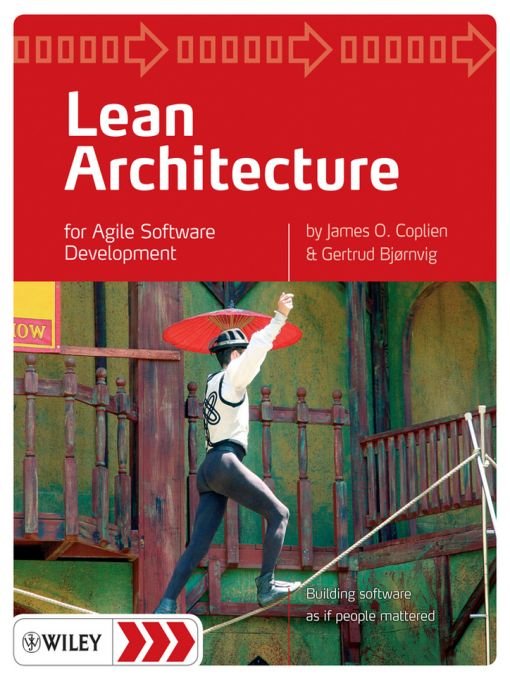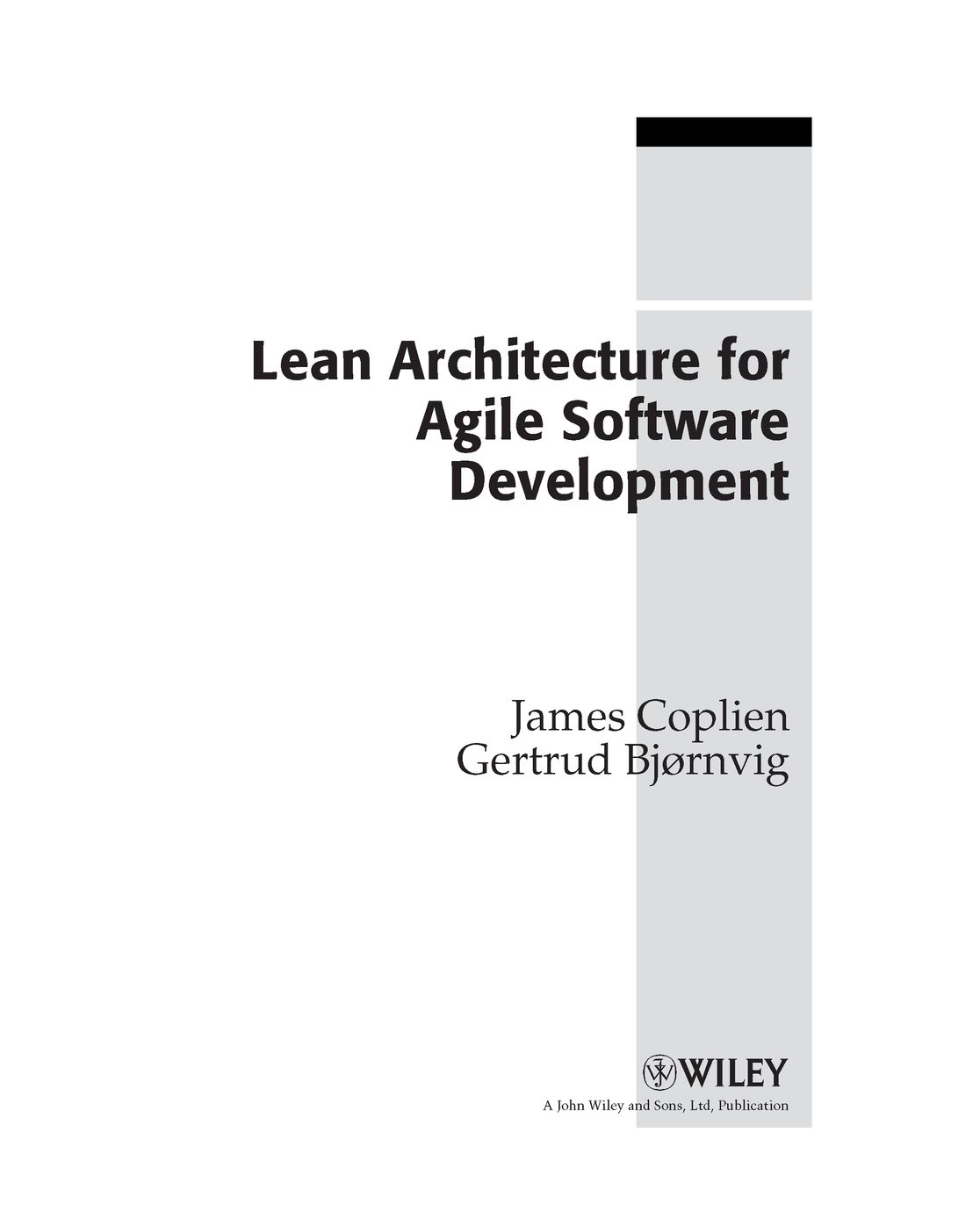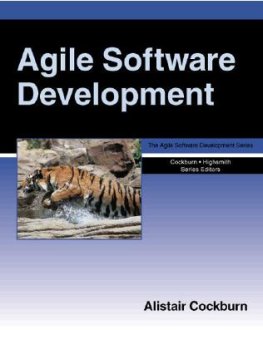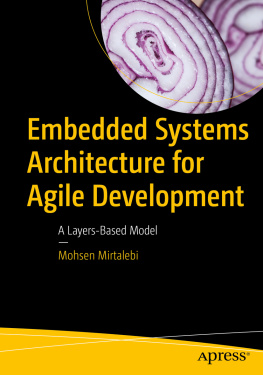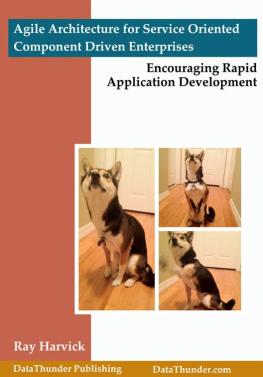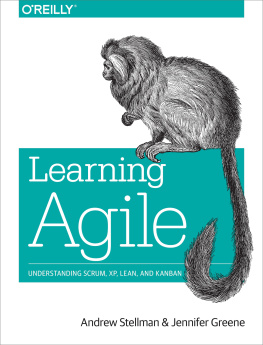Table of Contents
Dedication
To Trygve Mikkjel Heyerdahl Reenskaug, also a grandfather
Publishers Acknowledgments
Some of the people who helped bring this book to market include the following:
Editorial and Production
VP Consumer and Technology Publishing Director: Michelle Leete
Associate Director - Book Content Management: Martin Tribe
Associate Publisher: Chris Webb
Executive Commissioning Editor: Birgit Gruber
Assistant Editor: Colleen Goldring
Publishing Assistant: Ellie Scott
Project Editor: Juliet Booker
Content Editor: Nicole Burnett
Copy Editor: Richard Walshe
Marketing:
Senior Marketing Manager: Louise Breinholt
Marketing Executive: Kate Batchelor
Composition Services:
Compositor: Laserwords Private Limited, Chennai, India
Proof Reader: Alex Grey
Indexer: Annette Musker
About the Authors
Gertrud Bjrnvig is an agile requirements expert with over 20 years experience in system development. She is a co-founder of the Danish Agile User Group and is a partner in Scrum Training Institute.
Jim Coplien is a software industry pioneer in object-oriented design, architecture patterns, and agile software development. He has authored several books on software design and agile software development, and is a partner in the Scrum Training Institute.
Preface
What my grandfather did was create options. He worked hard to allow my father to have a better education than he did, and in turn my father did the same.
Danny Hillis, quoted inThe Clock of the Long Now, p. 152.
Harry Grinnell, who was co-author James Copliens grandfather, was a life-long postal worker, but many of his lifes accomplishments can be found in his avocations. His father was an alcoholic and his mother a long-suffering religious woman. Grandpa Harry dropped out of school after eighth year to take a job in a coal yard to put food on the table after much of the family budget had gone to support his fathers habit. Harry would go on to take up a job as a postal worker in 1925 at the age of 19, and married Jims grandmother the next year. He faced the changes of the Great Depression, of two world wars, and of great economic and social change.
Youre probably wondering why an Agile book starts with a story about Grandpa Harry. Its because his avocation as a master craftsman in woodworking together with his common-sense approach to life offer a fitting metaphor for the Agile and Lean styles of development. This is a book about common sense. Of course, one persons common sense is another ones revelation. If you are just learning about Agile and Lean, or are familiar only with their pop versions, you may find new insights here. Even if you know about Agile and Lean and are familiar with architecture, youre likely to learn from this book about how the two ideas can work and play together.
As a postal employee, Grandpa Harry of course worked to assure that the post office met its business objectives. He worked in the days when the U.S. postal service was still nationalized; the competition of UPS and DHL didnt threaten postal business until late in his career. Therefore, the focus of his work wasnt as much on business results and profit as it was on quality and individual customer service. Grandpa Harry was a rural mail carrier who delivered to rural Wisconsin farmers, one mailbox at a time, six days a week, come rain or shine. It wasnt unusual for him to encounter a half-meter of snow, or snow drifts two meters high on his daily rounds. Flooded creek valleys might isolate a farm, but that could be no obstacle. He delivered mail in his rugged four-wheel drive Willys Jeep that he bought as an Army surplus bargain after World War II. He outfitted it with a snowplow in the winter, often plowing his way to customers mailboxes.
There are many good parallels between Grandpa Harrys approach to life and the ideals of Lean and Agile today. You need close contact with your customer and have to earn the trust of your customer for Agile to work. Its not about us-and-them as typified by contracts and negotiation; such was not part of Grandpa Harrys job, and its not the job of a modern software craftsperson in an Agile setting. The focus is on the end user. In Grandpa Harrys case, that end user was the child receiving a birthday card from a relative thousands of miles away, or a soldier in Viet Nam receiving a care package from home after it being entrusted to the United States Postal Service for dispatching to its destination, or the flurry of warm greetings around the Christmas holidays. The business entity in the middle in Grandpa Harrys case, the U.S. Postal Service, and in our case, our customers tend to become transparent in the light of the end users interests. Customers care about the software CD as a means for profit; end users have a stake in those products use cases to ensure some measure of day-to-day support of their workflow.
To say this is neither to deny customers a place, nor to infer that our employers interests should be sacrificed to those of our ultimate clientele. A well-considered system keeps evolving so everybody wins. What Grandpa Harry worked for was called the postal system: it was really a system, characterized by systems thinking and a concern for the whole. So, yes, the end user was paramount, but the system understood that a good post office working environment and happy postal workers were an important means to the end of user satisfaction. Postal workers were treated fairly in work conditions and pay; exceptions were so unusual that they made the news. In the same sense, the Agile environment is attentive to the needs of the programmer, the analyst, the usability engineer, the manager, and the funders. Tools such as architectural articulation, good requirements management, and lean minimalism improve the quality of life for the production side too. That is important because it supports the business goals. It is imperative because, on a human scale, it is a scandal to sacrifice development staff comfort to end user comfort.
Life in Grandpa Harrys time was maybe simpler than it is today, but many of the concepts of Lean and Agile are simple ideas that hearken back to that era. Just because things are simple doesnt mean they are simplistic. The modern philosopher Thomas Moore asks us to live simply, but be complicated (Moore 2001, p. 9). He notes that when Thoreau went to Walden Pond, his thoughts became richer and more complicated the simpler his environment became. To work at this level is to begin to experience the kinds of generative processes we find in nature. Great things can arise from the interactions of a few simple principles. The key, of course, is to find those simple principles.
Grandpa Harry was not much one for convention. He was a doer, but thinking backed his doing. In this book, well certainly relate practices and techniques from 15 years of positive experiences together with software partners worldwide. But dont take our word for it. This is as much a book about thinking as about doing, much as the Agile tradition (and the Agile Manifesto itself (Beck et al 2001)) is largely about doing, and the Lean concepts from the Toyota tradition relate more to planning and thinking (Liker 2004, ff. 237). These notions of thinking are among the lost practices of Agile. Agile perhaps lost this focus on thinking and product in its eagerness to shed the process-heavy focus of the methodology-polluted age of the 1980s.

